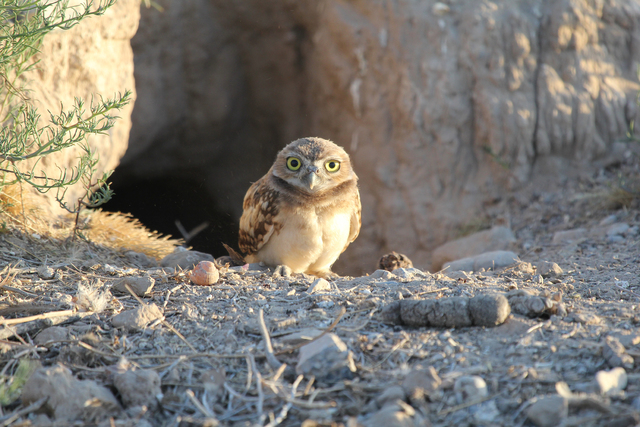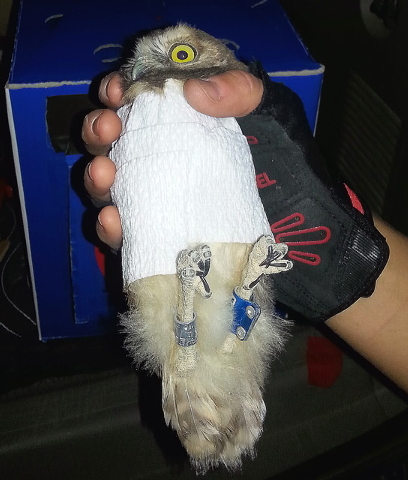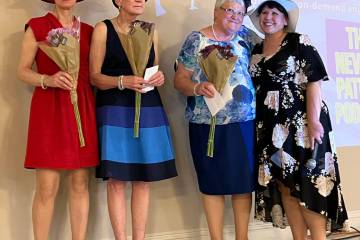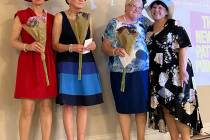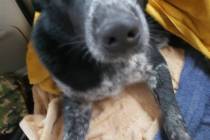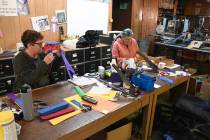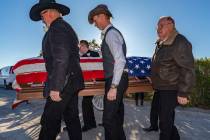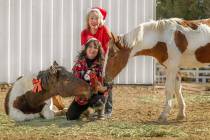Tagged burrowing owls focus of scientific study
Burrowing owls have hooted themselves back into the news.
Richard Cantino, project manager for the West Branch of Red Rock Audubon Society, has run a burrowing owl monitoring program in the Pahrump Valley in conjunction with U. S. Fish and Wildlife Service for the past five seasons.
This year he will change the highly successful monitoring program to focus on banded burrowing owls.
The monitoring program stemmed from a personal interest that Cantiono and his wife Carol have had for the bird. Carol Cantino is the president of the West Branch of Red Rock Audubon Society. Together they personally tracked 135 burrows in Pahrump. The monitoring program involved the community, who were trained by the U. S. Fish and Wildlife Service under the supervision of Christiana Manville, a wildlife service biologist. The study closely monitored the burrows to see how many chicks survived to fledglings.
The reason for the change is quite simple.
“The old program met its goals and we now have enough data on the reproduction rate,” he said.
The banding of the owls which was done last year has played a significant role in the shift of the program. Last year the area Audubon Society teamed up with the U.S. Fish and Wildlife Service through a grant to band at several locations in Pahrump and at Floyd Lamb Park.
The banding will help track the movement of the owls. The team banded five percent of the population by setting up traps. In Pahrump, the wildlife service used the owl burrows that were found by Richard Cantino and his volunteers. This allows the birds to be recognized over time and will improve the ability to conserve them in the future.
“We will now shift gears to watching out for banded owls,” he said. “We would like to know what is happening with them. We would like to know if they have moved to other burrows in the area and if some of ours moved to Las Vegas and vice versa.”
Richard Cantino hopes to be able to track the local owls to better understand their behavior.
“We would just like to know what is going on with them,” he said. “In order to do that we need to visit each and every burrow. We have 135 burrows in this area that we have found in the valley, which is pretty ambitious.”
The plan calls for a drastic change in the way the owls are monitored. He said instead of 30 minutes of monitoring, teams will just look for the blue bands. Also, instead of monitoring one or two burrows, the volunteers will be asked to monitor eight to 10. They will mark down if the burrow is occupied and how many owls they see. Also they will count chicks, but the main thing is to check to see if they have any bands. Then they move on to the next burrow. If they spot a banded owl, Richard will come out with a spotting scope to get the tag number.
The volunteers have discovered over time many aspects of the owls’ lives around Pahrump. The monitoring of the local owls has given the observers the average chick rate for local owls, which is 3 ¾ chicks per burrow.
“We have ascertained that most of the burrows that have chicks are near houses,” Richard Cantino said. “That tells you that there is more food near the houses than there is out in the wild. Another thing we learned is that in Floyd Lamb Park we have 30 something artificial burrows and the brood rate was higher than natural burrows.”
He said the bigger the burrow the more chicks are raised. Also more fledged in the larger artificial burrow than in nature. Richard Cantino said 66 percent of the owls in the artificial burrows fledged compared to a 40 percent rate for natural burrows. The main reason being is that the artificial burrow is more protected. In the wild, foxes and dogs can dig through a natural burrow to gain entrance, whereas they can’t dig through the artificial ones.
Richard said the banding will help determine what the population is.
“The program was started to determine population growth in urban areas, but we still need more information,” Richard Cantino said. “If we continue, we will learn that too. Since we know the population rate, we now want to see what the population is by checking more burrows.”
She said she hopes that the banded owls help them to reveal why some owls in the area leave and why some stay.
She believes the owls are driven by food. She also said she has seen owls move around in certain areas when normally owls are territorial.
“I would tell Richard that I don’t know what I am looking at,” Carol Cantino said. “These owls have moved all around. Sometimes they would be over there and other times they would be here.”
This was an unusual for these owls to tolerate other owls to move into their territory. Richard Cantino assumed they must be interrelated because owls don’t tolerate that behavior, but the bands will help to sort this problem out.
Carol Cantino said the banding has changed the game. The bands will allow scientists to check mating habits of the owls.
“Is there some type of fidelity among owls,” she said. “Do they stick with the same mate? If a pair was banded, then we will know if he sticks with that mate or goes off and fools around with some other mate.”
Carol Cantino said the most important fact about owls that the volunteers have learned is they still don’t know enough about this bird.
“With the banding, our journey is just starting,” she said. “We know where the burrows are, the fledgling rate, we know the dangers. Now that we got some banded there is a whole lot more to be learned.”
To participate in the burrowing owl monitoring program, contact Richard Cantino by email at richardcantino@att.net.


